My guest today is James Frame who is the CEO and co-founder of Symphony Natural Health and has been in the natural products industry for over 20 years. During that time he has established a global business that has supplied over 3000 tons of herbs and now operates in 11 countries. His operation controls the whole process from seed to shelf and consists of organic and sustainable farming as well as creating industry in 3rd world countries, which injects 5 times more into the local communities than just buying raw materials.
On today’s podcast, we cover what to look for in herbal supplements to ensure potency, purity and quality. We also discuss why organic and sustainable is important and one particular herb that helps with hormone balance (and how it may also benefit the health of your skin). You may have heard of this herb before, it’s called Maca, but what you’ll learn about it during this interview will likely surprise you.
So please enjoy this interview…
Learn more about Symphony Natural Health: Click Here
TRANSCRIPTION:
Trevor: Hi there, I’m Dr. [Trevor Cates 00:00:02], welcome to the Spa Doctor podcast. Today we’re talking about herbs and hormone balance. My guest is James Frame, who is the CEO and co-founder of Symphony Natural Health, and has been in the natural products industry for over 20 years. During that time, he has established a global business that has supplied over 3,000 tons of herbs, and now operates in 11 countries. His operation controls the whole process from seed to shelf, and consists of organic and sustainable farming, as well as creating industry in third-world countries, which injects five times more into the local communities than just buying the raw materials.
Trevor: On today’s podcast, we cover what to look for in herbal supplements to ensure potency, purity, and quality, why organic and sustainable is important, and we talk about one particular herb that helps with hormone balance, and how it may also benefit having healthy skin. You may have heard of this herb before, you may have heard of it, it’s called [macca 00:01:06], but what you learn about this herb during the interview will likely surprise you, as it did for me. I actually reached out to James because I was seeing variability in the results with my patients taking maca. You’ll get to hear the answers to my questions and concerns about maca that he provides. Please enjoy this interview.
Trevor: Hey James, it’s so great to have you on my podcast.
James: Thanks Trevor, good to be here.
Trevor: Yeah. You’ve supplied over 3,000 tons of herbs from around the world. Along with this whole process, what are some of the things you’ve learned with all this?
James: That I shouldn’t have been in herbs. No, and that’s a joke, but at the same time, there’s been a lot of hard lessons, you know because when you’re doing raw materials, markets can just collapse. When you’ve grown those and you’ve got all of these crops and a market collapses, and you don’t have any connection to the customer, there’s nothing you can do. That’s actually one of the reasons that we started to become vertically integrated, was because we realized that customers want the highest quality organic, clinically proven, safest, cleanest, best products in the world.
James: If you don’t have to deal with any middlemen, and you can go directly to a customer, you will always find a customer that wants that. Anyway, but back to your question. I think the biggest thing that I’ve learnt in relation to herbs and natural products was just test, test, test. You don’t trust what someone says, you have to test it. The first time I learnt that was when we were starting to do kava out of Vanuatu. It was really interesting, because we were looking at the whole process of how you get kava, and we were evaluating it. What we found was that in Vanuatu, they had dried kava the same way for thousands of years, and when we tested it, we found that it actually was detrimental to the level of the active constituents and could reduce them by 30 or 40%.
James: We immediately decided that we would change the drying process, and developed a process which nobody else did in the islands except for us, but it had an impact. Conversely, when we went into Peru and did maca, we found that the process that they had used for thousands of years was actually the best way to do it. What was funny was a lot of people had started drying it in tobacco driers, and it was actually detrimental. Using the traditional way they were was really key, so that sort of test, test, test aspect was key. Then that sort of evolved to St. John’s Wort. When we did St. John’s Wort, you know it wasn’t just about testing the drying methods, but it was everything.
James: What we found and what we started to do with all of our herbs is test every single thing that we did, from the seeds that we planted, to where we planted them, to how we grew them, like every incremental thing. Just to use St. John’s Wort as an example, we found that a particular variety of St. John’s Wort only grew in Australia, that grew in particular regions in Australia. If we harvested that during a magic four-hour window during the day looking at the [Dionial 00:04:45] cycle, during a certain time in its season, and we harvested it very softly with particular types of harvest machines that didn’t damage it so it oxidized and broke down, and then we used gradual dehumidifying drying, we could end up with St. John’s Wort that had high Peressin levels of 1% and high Perforin levels of 10%.
James: Now, you know what that is because you’re a naturopathic doctor, but for people who don’t know, that’s three times the level of a standardized extract. Instead of a natural product, say, in a herbal extraction company, taking the raw material and concentrating it four or five times, they were getting ours and having to dilute it by a third. Again, like every incremental thing, test and test. It’s like A-B testing, like, “Did this work or does this work? Does this work? Does this work?” Yeah, for us it was test, test, test, and customers can do the same thing, they just have to ask companies.
James: They say, “Okay, you’ve said this. Send me the evidence.” My favorite one, with Himalayan crystal salt, when we went into that business, was every man and his dog claims that Himalayan crystal salt has 84 trace minerals. When we found the actual suppliers who own the mines, the first thing we said is, “Send us your certificate of analysis showing 84 trace minerals.” There was four mines that do Himalayan crystal salt, one of them had the certificate of analysis, two of them said, “We don’t have one, but trust us, it’s the same,” and the third one sent us a photocopy of the other certificate of analysis.”
James: It’s like, “No, I think I’m going to go with the one that actually has the real one.” Yeah, like sometimes we don’t give ourselves permission to ask these questions, but we can.
Trevor: Right, and I think a lot of times as consumers, we’ll take a pill, we take a supplement, we take an herb, and we’re just taking it because we know it’s good for us, or the public, this is the general perception. A lot of times we don’t think about the whole process that all of this goes through, from like you’re talking about, the seed to the plant, and then how the plant is dried, and the extractions. Then you’re just talking about how it’s grown and prepared, and then there’s all the other stuff that comes after that, whether it’s a powder, a liquid, a capsule, a tablet, all these different ways to do it.
Trevor: What should people be looking for to make sure that they’re getting herbs when they take herbs, that they’re getting something that is, first of all, pure, and then second of all, a high quality that’s going to actually give them the benefits that maybe the research showed, or that they heard actually will help them.
James: Well, the best way is to buy the herb in Australia, because Australia has the highest standards in the world, and our whole industry is regulated. You can’t actually put something on the shelf that doesn’t have clinical evidence to show the therapeutic benefit.
Trevor: Really? And you’re not biased by that?
James: What’s that?
Trevor: You’re not biased by the fact that you’re from Australia?
James: No no, not biased at all. If you can’t do that, you know one of the things that’s really good in the United States is, over the last three or four years, the standard of GMP and all of that that have always been there have started to really be enforced. When it comes to safety and what is in a product, those standards are really pretty good. The claims that people can make, you can have the best possible echinacea in the world, and you can only make the same claims that somebody who has the worst echinacea on the market can. That’s one of the catches over here, and so the key is having a look at what clinical evidence does the exact product or ingredient that I’m taking have?
James: It’s not borrowing science from somebody else, it’s does this product actually have its own clinical research? Thus sometimes we’ve sort of got to find where those ingredients are, and then find which companies are using those ingredients in their products, and that’s the key. Then the other aspect is finding experts like yourself, who you trust, and you’ve used the products that you’ve recommended, and that they have got a good result. They say, “Okay, I trust this doctor, they seem to be able to curate lots of products that are on the market, and I should go to them, I can trust them.”
James: Then it’s your responsibility to keep up your standards and make sure that you’re not recommending anything there. I think that, yeah, customers looking at that, and then finding people who are experts who can delve into the sites a little bit more and the products in the industry, and get their opinions as well.
Trevor: Right, and you know that’s one of the reasons why I think it’s great for people to work with a naturopathic physician or a functional medicine doctor, because they generally do a lot of that work to find high quality supplements, ingredients, herbs. That’s part of our job, is to find that, because we want our patients to get results, and we want them to have clean products, yeah.
James: Absolutely. Even more importantly, which I think is probably an even more important role for the naturopathic doctor, is, “What dose should I be taking of that particular thing?”, because every person, you know we get the stock standard, “This is your standard dose,” but every person has different requirements. That’s when working with a naturopathic doctor who can test and evaluate and say, “Right, you need 3,000 milligrams of this particular fish oil, not the standard 1,200 or 1,000 or whatever it is, Vitamin D, you need this super duper large amount for this period of time, and then once you’ve done that, we’ll test you and you’ll probably need less.”
James: Yeah, that dosing I think is probably the assessment and analysis of you as an individual is probably the most important thing for a practitioner, and why it’s so key to work with them, because they can use all of their wisdom and knowledge to get you exactly what you need in the doses to have the fastest, best result.
Trevor: Yeah, absolutely. I know that it’s not always easy to find access to naturopathic physicians, but as much as you can, I think it’s a great idea. Then there are certain supplements I think people can take without having to have their hand held through the process, and there are also certain companies too that are reputable companies. Understanding the questions to ask, if you’re willing to spend the time yourself to ask the questions, then I think there’s definitely something you can do on your own. When it comes to, you know there are really two different ways of looking at does an herb work or not: there’s the research, and then there’s anecdotal evidence.
Trevor: What do you think, I mean, I know that you’re big on research, but what about the anecdotal evidence and traditions in cultures and herbs that have been used traditionally for many years that may not have the research behind them?
James: Yeah, so I think that there’s a place for everything, and I think that anecdotal evidence is a great place to start, and it’s really important, but the challenge with anecdotal evidence is that how has it been used traditionally? Using, you know we’re going to talk about maca, and so looking at maca as an example, we know anecdotally that maca has had positive influences and impacts on fertility, but the reality is that Peruvians, they use maca for, they ate it for years and years day in day out as part of their stable diet, and lo and behold it had a positive impact on their fertility.
James: Then, does someone take that anecdotal evidence and then say, “Oh okay, cool, so I’m going to go and buy my bag of maca, and I’m going to take it, and I’m going to take a little bit every day, and after a month, I should be pregnant.” The reality is that it’s not quite the same, buying your bag of maca, who knows the quality and stability and efficacy and what dose are you taking, and all of that stuff, but more importantly, that evidence was based on somebody using it for years consistently, nearly every day of their lives, versus the impact that you want to have.
James: Anecdotal evidence is a great place to start, but the reason that I think clinical research is so important is because clinical research allows us to take that and then say, “Okay, so with this information, if I give this person this particular dose and this particular quality and efficacy that has these active constituents, and if they take it consistently over this period of time, they’re going to get this result.” That’s where those two worlds sort of come together. The other little caveat that I would throw into the equation, having worked in third-world countries for 20 years is, funnily enough, when you go to a third-world country and you talk to the local people and you say, “I’m really interested in buying a huge amount of this herb. I’ve heard that it works for this, what else does it work for?”, you can pretty well rest assured that it works for everything, including fixing the kitchen sink.
James: Anecdotal evidence is often passed down by mouth, and so what is the reality? That’s the other thing, is finding out what is that herb actually really good for, like what’s the specific condition that it’s good for, versus looking at everything under the sun.
Trevor: What is it good for, and also the dose that gets that result, and the form of the herb, right?
James: Yeah.
Trevor: What do you think when it comes to dosing and forms of herbs, the difference between liquid, powder, capsule, tablets, I mean what do you think about that? Is there some general recommendations you can have for people?
James: Yes, the general recommendation is every single herb in the world is different, and how it works in our body is the key. The thing that was really interesting for me, and I’m obviously really fortunate because my co-founder and the director of our research and development is a guru when it comes to designing plants. His philosophy is that he looks at the biology and chemistry of every individual plant that we work with, and he develops a different manufacturing process to concentrate the full spectrum of active constituents, optimize the bioavailability and improve our body’s ability to absorb and sustain and all of that through digestion.
James: He looks at every single thing individually, and so I’ve done the same thing. As an example, and I’ll just say for me … The other thing is, is everybody’s different, every person is different, and say, one person’s microbiomes are very different to another, and their absorption and what they’re going to absorb and what they’re not, and dosing and form, all of that. All I can say is that when it comes to, say, echinacea, I’ve found that liquid echinacea, I love herb farms, their super echinacea product, every time I use that and every time I get that, I recommend that to someone for a particular issue, a cold and sore throat and that, has awesome results.
James: Then, you know when it comes to maca, what we have found is that if you give it to somebody raw, it’s very hard for them to digest, because it’s a little bit like a potato, it’s hard to digest a potato raw. Using a process which changes the molecular structure using water, temperature, and pressure, which is sort of like cooking, we can change that molecular structure, remove the starches, and it goes from having water solubility of about 68% raw to 99%, so it’s really easy to digest. That’s again where I’m always interested to test myself and see what works, and what do I actually get that result from and feel that experience?
James: While the liquid echinacea might not taste too good, if I mix it with just a little inch of orange juice and gargle it and whatever, it’s bearable, but it works every time. Yeah, it just depends on the product.
Trevor: Right. I appreciate that, because I’ve heard some people say, “Well, I only take liquids, or I only take powders, or I can only take capsules,” so it’s good to know that it really depends upon the herb. Then also, there are a lot of combination formulas out there where people will blend different herbs together, and it makes me wonder when different herbs are put together, does that impact the efficacy the absorbability of that? I mean, just like we know that about nutrients, but wouldn’t herbs be the same?
James: For sure, and you know we just changed our company name for our finished product line from Natural Health International to Symphony Natural Health. The reason that we did that is we looked at how our products work and how they create a symphony within the body, you know when it comes to hormones, we’re trying to create a symphony of hormones in our body. We’ve been sort of with the marketing trying to come up with the analogies of how can we use that name to incorporate into our story. One of the aspects is that [Dr. Misner 00:19:09], who’s the head of our R and D, is a composer.
James: He’s someone who looks at what is existing and creates something completely new, having to pay attention to every sort of instrument in the orchestra. When he’s looking at how we dried and how we grow it, there’s that aspect, but then the other aspect is that when he’s including multiple ingredients and combining them, does that create a symphony? Does that actually, when you bring them together, when you test it, does that have a better benefit than if you take things individually? The thing that we found was that most people don’t have a product created by a composer, they have it created by a DJ.
James: A DJ takes preexisting, you know other people’s music, mixes it all together and says, “Hey, this is much better.” That’s what we do with 99% of supplements, we borrow everybody’s science and we take this ingredient, this ingredient, and this ingredient, we mix them all together and say, “Well, if you add all of these people’s benefits for their clinical trials, this must be better,” but we don’t know that. I just was at a conference with a lot of people who are involved in our industry, and we were talking exactly about that, that the next evolution that is really critical for our industry is when you make these combination products, if it is made by a DJ, that they need to test it and say, “This actually is better, when you combine these together, this is safe, you don’t have to worry about that,” versus just assuming when you combine three things together that it’s all okay.
Trevor: Yeah, that is definitely something that comes up for me a lot when I’m looking for supplements or for herbs for patients, because taking an individual of all the different herbs that I want to give a patient or individual nutrients would be a lot of pills or liquids or capsules or powders, so looking for those combination formulas is something that I look for a lot. It is good to know that there are some companies that put a lot of thought into that. Not all of them do though, so I think it’s good awareness for everybody to have, whether you’re a practitioner or somebody just at the health food store looking for a supplement.
James: Also with naturopathic doctor school, I mean when you guys were trained, you were often trained with practitioners and herbalists, who had taken this and this and used it together. You’ve been taught when you combine this plus this, it’s okay and it’s the improved benefit, but you don’t get taught when you combine these five or six things together, that everything is okay, because those combinations, as you go up and up and up, there’s only so much research that you can do, and history and so forth. Yeah, there gets a tipping point where you have to be careful.
Trevor: Yeah, I find that it’s a really exciting time to be involved in this industry and to be a physician, a product manufacturer in all of this, because there’s so much that we’re learning and research that’s now available and opportunities, and so I think it’s an exciting time to be involved in this, and we’re all learning as we go, yeah. Another thing that people often ask me about is, when it comes to the purity of herbs, how important is it to choose organic?
James: When it comes to herbs, I think it’s really important. I don’t know if you’ve read The Omnivore’s Dilemma, which is an awesome book, and it gives a whole perspective on how organic meats are, in some cases, manufactured or produced in a way that’s even worse than the traditional ways, because they don’t have antibiotics, so they’ve got sick animals that are still in the same squalor and eating the same grain, it just happens to be organically-certified grain. However, as that book points out, that when you’re looking at herbicides and pesticides and all of the things that we put in our soils, that is a real thing to be paying attention to.
James: Organic fruit and vegetables is something that we really want to be making sure that we do, and I think with herbs that grow in the ground, same thing. Organically certified is really important, and not just from the safety aspects of it and the contamination, but also the traditional organic practices are, in the majority, sustainable, and that’s what we’re about. From the simple business philosophy that you actually want to continue to sell this herb indefinitely, so why wouldn’t you want it to be sustainable? That’s what I always find funny, is why wouldn’t you do sustainable?
James: Yeah, organic and sustainable I think are just standard business practices because it’s logical. Yeah, I’m a huge proponent, and I can tell you it is an arduous process. We just spent 10 years working on that, and the funny thing was we had it right for a particular area that we were growing crops, and then all of the sudden our demand got so big that we had to expand it, and we hadn’t been able to start the process that we had with these other places, and it just threw a spanner in the works and took us twice as long. Yeah, one of the two key products that all of our products were, except for two, and those two ones are, as of now, basically are organically certified. It’s a good process, I like it.
Trevor: Okay, good. Yeah, so I wanted to bring that up because I think it is an important topic. Let’s talk about one of the herbs that you’ve studied extensively and you guys make, and that’s maca, you mentioned a little bit. For people who aren’t familiar, I think a lot of people are familiar with maca, it is an herb that I talk about in my book and I recommend it to a lot of patients, but for people who aren’t familiar with it, could you start off by explaining a little bit about it? There are different types, right? Some people might even not be aware of that.
James: Maca is a herb that grows in Peru, in the highlands of Peru, that has been used for thousands of years by the Peruvians and many parts of South America, particularly to help with, you know it’s a superfood, so to help with nourishment and fertility. Fertility is always a big one when you look at actual superfoods. We throw “superfood” around, but it’s usually a really nutrient-dense food that has a positive impact on reproduction, and people’s ability to deal with stress, which is obviously a key factor as well. Maca sort of falls into that category. The thing that’s really interesting with maca, and this goes to test, test, test, again, is that the Peruvians have used maca for thousands of years, but what they never really paid attention to is that there’s all these different colors of maca.
James: What the Peruvians used to do was just mix them all together in the natural ratio as they grow, and say, “This is maca.” What we found, and Dr. Misner, when he went to research there in 1999, was that he’s looked at all these colors and he’s said, “No, there’s something here,” and so we started researching it. What we’ve sort of found over the last nearly 20 years is that those different phenotypes within maca aren’t just different colors, they have different DNA, different analytical profiles, but most importantly, different phenotypes have different physiological effects in the body.
James: What we found as an example is that there’s one type of maca which affects fertility in men, and a different one which affects fertility in women. There’s one that reduces the size of prostate in men, and one that can increase it if you have too much of it. There’s one that affects cholesterol, none of the others do, two affect bone density, none of the others do. Depending on who you’re giving it to and why depends on which types you should do. That sort of potentially is why, you know when you say, “What can you use maca for?”, they say, “You can use it for everything including fixing the kitchen sink,” because all these different types.
James: For sure you can probably get benefits, as I said, when you use maca for years and years every single day, you’re going to have these plethora of benefits, but when you’re trying to have a statistically significant effect on a particular function or a hormone or whatever the case is, you want to be using the exact right type and the exact right dose and so on to have those benefits. The other thing that we found was that maca isn’t stable when you manufacture it, and so thus the efficacy can decline, it’s really adversely affected by moisture and oxygen. You think about a bag of maca, the moment that you open it up, what happens? Oxygen and moisture gets in there.
James: We looked at all of those sorts of aspects, and sort of found what is the right types for different conditions, and how can we manufacture it to get the highest efficacy to have those therapeutic benefits.
Trevor: Thank you. I think a lot of times we talk about maca and helping with hormone balance in women, that’s one of the things that you mentioned, so it’s one of the things I wanted to pic your brain a bit about more. What are the right types for hormone balance for women?
James: Cool. Sorry, I just remembered one thing. There has been conjecture about phenotypes, and you don’t have to take my word for it. I would recommend, if you have a look, if you just search “pub med” or “research”, try and find one clinical trial that on … Sorry. When you look at the clinical research on phenotypes, what you’ll find is that over the last 10 years, there is a huge amount of research showing that one phenotype will work for a condition and the others won’t. When we published some of our results most recently on the DNA and the analytical profile, the American Botanical Council, who knew that there had been a lot of conjecture in the botanical world about this, with some top herbalists saying that this wasn’t true, they went away and mirrored all of the DNA analysis and got their own samples, and they worked with the USDA, the US Department of Agriculture to do the same thing, and those results actually came out at the beginning of this year, replicating and validating and agreeing with everything that we’d said.
James: Yeah, so it’s not just us saying it, it’s being validated. Sorry, coming back to your question about women. The thing that we found really interesting, so firstly, how we got into maca, so do you know what was the biggest selling pharmaceutical drug that came out in 1998? Viagra. Do you know what every single natural product company on the planet tried to find? The herbal version of Viagra. Lo and behold, they scoured the world and they found, for example, in Peru, this herb called maca which had a positive impact on fertility and potentially libido and strength, and so men’s hormones.
James: We at that time were one of the biggest suppliers of raw materials in the world, we were supplying about 400 tons per annum of herbs from all around the world, and some of the people who were working in maca said, “Dr. Misner, can you guys go down and have a look at supply chain, and have a look at this herb and see if you can improve upon what’s already being done down there, and weave your magic?” Dr. Misner went down there and spent about four months doing research, and since then he’s gone back every single year for at least a month doing more research there, as well as away from Peru.
James: Firstly, he said, “They’re all looking at the wrong thing, they don’t know what the active constituents are, and I think I’ve found them. They also don’t realize that all these different types are potentially different herbs, different phenotypes.” He said, “More importantly, they’re all focusing on men because of Viagra. Hormone balance, that’s what we should be focusing on for women.” I mean, you know when you look at regulation of cycle, PMS, acne, bloating, PCOS, [aluminaria 00:32:10], endometriosis, menopause, fertility, the list just goes on, it’s like, “Women.”
James: At the time, hormone replacement therapy, or [Primin 00:32:20] was the number one prescribed pharmaceutical in the world for women, so it was just logical. We started researching women, while everybody was focusing on men, and we looked at the different phenotypes. What we found was that the natural ratios that maca grows in, that they mix it all together, that combination was good for adrenal health. That was good for energy, particularly good for men, because you trigger a man’s adrenals, and it can have a positive impact on lots of areas. Apart from that energy focus and the adrenal impact, when we started hearing about, “Oh, it does this and this and this,” it just didn’t show.
James: That’s when Dr. Misner really started to look at all the different phenotypes and see is there a better formulation or combination, or one that’s ideal for women? We started doing a lot of research, and it took him about a year, I think it was, to come up with a formulation, and then we did pilot studies in pharmacology and toxicology, and then human double-blind clinical trials, and then we tested other things, and so on and so on and so on. What we found was, yes, there are really different types that women should use. The example that I often talk about, which is a really interesting example, is PCOS, or the manifestation where testosterone is too high and estrogen is too low.
James: That can be PCOS, or women might be in menopause, and so they might be getting acne or facial hair, or they might be losing hair on their head, using that as the example. What we found was that when women had those types of conditions and used standard maca, that it made them worse, because guess what? When you have those conditions and you trigger the adrenals, you exacerbate that condition. What we found with our research was that different phenotypes, if you use them in concentration, have an effect on other areas of the body, such as the hypothalamus, the pituitary, and so on and so forth.
James: If we’re able to nourish the hypothalamus pituitary adrenal access to balance and regulate the whole body, then we could potentially have a positive impact on those conditions versus detrimental. Lo and behold, what we found since then is when you do that, and so we developed a product called [Feminessence 00:34:46], which nourishes the whole HPA, that when you’re looking at PCOS, it can actually help with rebalancing that estrogen/testosterone imbalance, whereas normal maca using the types which are more beneficial for men made it worse. Just that example, it shows you how profoundly important that is.
James: We also found that out with the thyroid, where if you have hyperthyroid and overactive using maca can exacerbate and make that worse, where Feminessence would balance the HPA and bring that into regulation. Estrogen dominance, it could be adversely affected where again, if you balance the HPA, you’d bring that back into harmony. Yeah, using the right type was profoundly important for men and for women.
Trevor: Right, right. Well, you know I’ve definitely seen in my practice where I’ve either put someone on Feminessence, and then when they ran out, they just went and got a generic maca, and then said, “Oh, I’m not noticing the same kind of benefits.” Then when I find out that they’re not actually using Feminessence, you know it’s actually one of the reasons I reached out to you awhile back, “Why is this happening, why are people noticing a difference with the different forms of maca?” You explained this to me then, and I’m excited to have you share this with other people so they can understand why that’s the case, because there are a lot of people I think taking maca, and a lot of times I think they pick it up thinking they’re going to do it for adrenal support, for energy, because that is one of the big marketing claims that some companies will make with maca.
Trevor: Maybe that particular phenotype could be good for that, but just like you said, it depends on what your goal is, what you’re trying to do, right?
James: Absolutely.
Trevor: Yeah, great. When we talk about the skin, how is it that maca might be beneficial? I talk a lot about skin to my audience, so how do we tie that all in?
James: For sure. I had to research up to make sure I was technically correct, because I hate it when I say these things and then one of my doctors comes back and said, “You know when you said that? That’s actually not right, you have to say it this way.” I brushed up, and if I get it wrong, you tell me, because you’re the expert. The thing is, when we look at skin from a beauty perspective, we often think about collagen and vitamin D and moisturizers and all of these sorts of things. One of the areas that often gets overlooked is the hormonal aspect, and as women age, obviously that decline in hormones has a significant impact.
James: What was interesting for me when I found out was how estrogen impacts the elasticity of skin, estrogen impacts the thickness of the skin, the moisture content, elasticity, suppleness, and even blood flow, so all of those things impact wrinkles and the texture and the strength, like all of those aspects of our skin. Estrogen is key in relation to that particular area, and that’s one of the things I also talk a lot about to patients and customers, is that this is what, you know when you balance hormones, if you’re using Feminessence as an example, then this is what it does as far as the hormones are concerned, but that’s just one part of the equation.
James: You need to still moisturize, you still need collagen, you still need vitamin E, you still need to do all of those other things. It’s a matter of doing everything that your skin needs, to work together to get the most optimal result.
Trevor: Right, absolutely, and I oftentimes talk about it in my book, I talk about how hormone imbalance is one of the big root causes behind skin issues, a lot of skin issues. Certainly as it applies to aging as well, so it definitely is something that we want to address. I want people to understand though when we’re talking about maca, it’s not that, when you talk about HPA access, I want people to understand when we talk about hormone balance, we’re talking about being up on the chain, we’re not talking about an impact that maca might have on the ovaries and creating estrogen, but we’re going above and beyond that, like what stimulates all of the different hormonal pathways, and that’s the HPA access.
Trevor: I just wanted to clarify, if you wanted to add anything to that, to help people understand that it’s not going to just increase or decrease estrogen by taking maca, but the idea behind the balancing effect of it.
James: Absolutely. Something that’s really interesting, and your audience can have a look at the research themselves, is that to date, when you look at all of the research on maca, there is no clinical evidence that any type of maca impacts hormones in women who are peri and post-menopausal, except for Feminessence. When it comes to younger women, when their ovaries are functioning, we’ve seen evidence of impacts on estrogen from Feminessence and other types of maca as well. When the ovaries are working and you’re using phenotypes which can stimulate the adrenals and the ovaries, you can have that impact on estrogen.
James: When you’re looking at things like PCOS and post-menopause, when ovaries aren’t working as well, you need to look at the HPA, because estrogen isn’t just produced in the ovaries, it’s produced in the liver, the kidneys, the fat cells. When we can get the biofeedback within the body through the HPA access to trigger these other systems, the body can help balance and impact all of those. What was really interesting in our studies was that we didn’t just see that it increased or had a positive impact on estrogen. We saw that once it got to an optimal level, it just plateaued off, because that biofeedback.
James: Hormones like FSH which skyrocket during menopause, we saw it reduce and plateau off. Cortisol, that’s obviously a big impact as well, stress, we saw cortisol reduce as well. We saw progesterone being improved. Then when we look at blood sugar, insulin and glucagon, not everybody is aware that insulin is a hormone, controls taking sugar from the bloodstream into the cell. What was interesting in the studies, we saw it rebalanced insulin and glucagon. This is the theme that’s really awesome, is when you nourish the hypothalamus, which is the master gland, we see balance and regulation within the body of all hormones, not just stimulating one part of the body to increase something, we balance and regulate.
James: That’s really exciting, because when you look at many many conditions, whether it’s, we know skin and beauty is one aspect, but cardiovascular health, bone density, mental health, that balance and regulation of all hormones is critical for all aspects of our health.
Trevor: Right. What you just talked about, the other impacts of hormones, is another way that plays into skin, so high cortisol levels can trigger inflammatory skin conditions. If we’re low in cortisol, then that’s a way that it could help the skin. Then also you mentioned like glucose balance, and those kinds of issues can also trigger skin issues and acne breakouts and things like that, so balancing blood sugar and metabolism, those sorts of things can also impact the skin. When we’re talking about the HPA access, there’s a lot more ways than just, I mean I know you mentioned estrogen, and that definitely that does play a role in the skin, but there’s a lot there that it could potentially benefit, so it’s great.
James: I’m always a massive proponent of like, look at the three core systems, what are the core systems? The core systems are our HPA access, our microbiome, and our ability to detoxify. Like you get those three systems really working in your body, and you’re going to have beautiful skin, you’re going to be healthy. Then it’s a matter of, “Okay, if we get those three systems working, what do we need to fill in? Do we need more vitamin D, do we need more fish oil, what do we need to add to that?”, but let’s get the systems in the body functioning optimally. That’s actually what happens when we age, you know that’s the thing, is when you look at drinking, why is it you can drink so well when you’re 18 years of age, you can drink for three days straight and you don’t have a hangover, and you just have a little bit of alcohol when you get older, and you feel like you’re going to die?
James: Well, it’s not because you’re a better drinker at 18, it’s because your liver and your kidney and your detoxification system is working so well, because it hasn’t been stuffed up by the environment as much as it has when you’re older. Same thing with hormones, when those systems, those glands and their production doesn’t work as well, we need to trigger it, turn it back on to get that working more optimally, and same with our microbiome, resetting that from the damage that we’ve done to it.
Trevor: Absolutely.
James: It comes back to the same things all the time.
Trevor: Right. Well, and you know I think, James, at some point maybe we should start looking at what we can do with maca topically on the skin too. That’s a topic for a different conversation. I wanted to thank you so much for coming on today and sharing information. You want to tell everybody where they can find out more about you, and also any direction you want to point people to to the research on this, so they can, if people are really curious, “Is this guy telling the truth here?”, where they can go to find out more.
James: For sure. Yeah, so all of our research, if you go to feminessence.com, and I’m sure you’ll put that up there so people can just click on it, try not to have to spell it or decipher my accent. If they go there, if you go to the clinical research section, it has all of the references of all of our clinical research, and it has links to Pub Med. It’s not a matter of it’s some thing that one of our doctors wrote, these are all published in international medical journals. They can click on there and get all of that information.
James: In addition to that, we have references from everybody else’s research there as well, so they can get that information and have a look at the clinical research themselves and evaluate it. Pretty soon, I know that we’re going to be publishing with the American Botanical Council and the USDA, some of their findings as well, because that was all done together, so that will be more research that is coming out.
Trevor: Okay, great. All right, thanks again, James, for coming on today.
James: [crosstalk 00:45:44], Trevor.
Trevor: I hope you enjoyed this interview today with James Frame, and got some valuable information about herbs and the quality, purity, potency, all of that information today, as well as some information about maca, and how that may be a good option for you, for your health, for your hormone balance, for your skin. Also, you can find out more about that by going to the website where James Frame has all the research that he mentioned. All you have to do to go find that is go to thespadoctor.com, go to the podcast page with his interview, and you’ll find all the information and links there.
Trevor: While you’re there, I invite you to join the Spa Doctor community, and you can also subscribe to the podcast on iTunes, so you don’t miss any of our upcoming shows. If you haven’t done so already, I highly recommend you go to theskinquiz.com to get your customized skin report. You can find out what messages your skin is trying to tell you about your health, and what you could do about it. Just go to theskinquiz.com, it’s a free online quiz, it takes just a few moments to do. Also, I invite you to join me on social media, on Facebook, Pinterest, Twitter, Instagram, and YouTube, and join the conversation with us, with the community. I’ll see you next time on the Spa Doctor podcast.
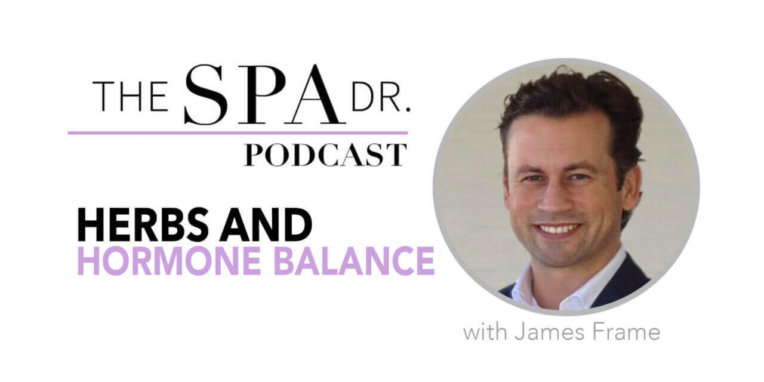
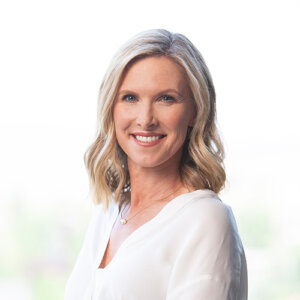
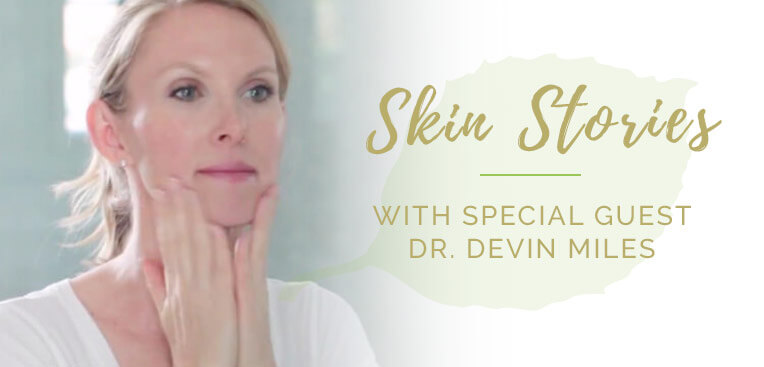
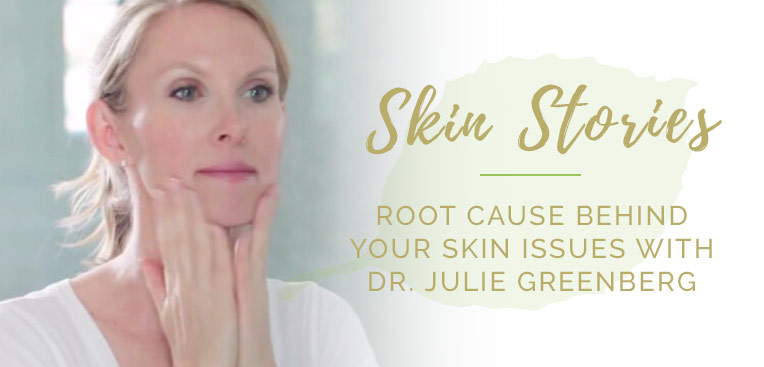

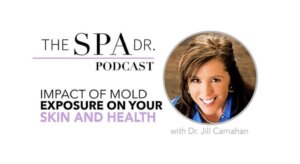
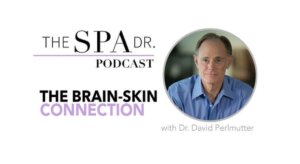

Reader Interactions